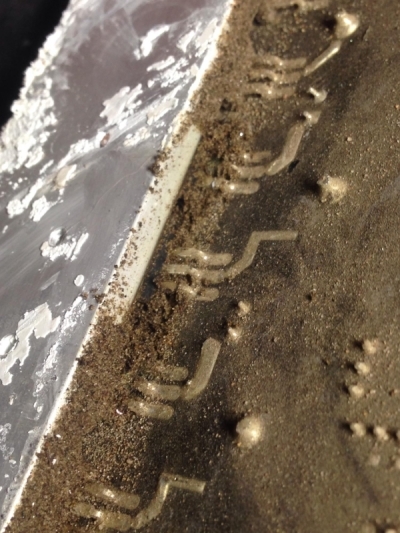Monowheel in winter

Winter has come to the territory of Russia. Many summer gadgets are already on the shelves, waiting for next spring. But sometimes on the streets of cities you can see a warmed, spiked and resistant cyclist. And in some places you can see the mono-classists (monocollecists?). No matter how paradoxical it might seem, the operation of monowheels in winter is possible, albeit with some special features.
Batteries
If you look at the technical specifications of lithium-ion batteries of 18650 different companies, they usually indicate that they can be discharged to a temperature of -20 ° C, and charged - not lower than 0 ° C. The problem is that, as we know , mono-wheels have a recuperation that charges the batteries with each braking. The plastic of the case conducts heat well enough, so the batteries will be cooled despite the inevitable heating during charge / discharge. The cooling of the batteries is well marked by the decrease in the power reserve in the fall with a decrease in temperature. The easiest way is to warm the batteries. Foamed polyethylene is now available in different versions, probably the most affordable - it is thermal tape for windows. It is also convenient because there is weak glue on one surface, thanks to which the tape holds better.

My wheel, two layers of thermal tape on the sides and one layer below
')
I decided to warm the batteries, hoping that the snow would fall late, and it would be possible to drive for a long time at near zero temperature. According to the law of meanness, when I finished the work and looked out the window - there was a constant winter snow. However, that day I was able to ride well, to test the behavior of the wheel, I drove, albeit more slowly, about 12 kilometers, and the rest of the charge at 72% was directly summer-like.
By the way, there is a certain sense in sometimes checking the wheels - it was an unpleasant surprise for me to detect the friction of the insulation of the wire:

Theoretically, this method has the danger that the batteries will overheat when charging the wheel at home. But the chargers are low-power, usually 2 amps. At the forum owners monocoats also has not yet fixed problems due to insulation of batteries.
There is a more complicated way - to put a heating element with a thermostat on the battery and heat it by connecting to the monowire batteries or using external ones. But here, in my opinion, labor costs grow disproportionately to the effect obtained.
Waterproofing
The snow caught in the monowheel begins to melt in warmth, and the water is a serious threat to the electric unit. Different models of monowheels have different danger of water getting inside the case. In one of the most unsuccessful, for example, the controller board stands on the radiator, which looks into the wheel compartment and is often poorly fixed. Snow or dirt in this design can get into the case much easier, and be very close to the controller.

Dry sand on the controller board
It is very useful to know the structure and weak points of your monowheel. In closed models, for example, snow can be rammed in the wheel compartment, and it is highly desirable, once in the heat, to shake it out. Known stories of wheel failures due to flooding controllers or even motor-wheels (which cannot be sealed constructively), so it remains only to call for care and caution.
Shipovka
The standard tires of the monococks are designed for summer driving around the city, therefore they are slick or poluslik and were not created for driving on ice. Therefore, in preparation for the winter, some enthusiasts change the tire to studded. The situation is complicated by the fact that, due to the rare diameters, ready-made studded tires are rare, the BestGrip-type studs are good, but expensive (about 30 pieces), and the studding with self-tapping screws requires the camera to be protected from puncture by the same screws, for example, entering the curb. Layfkhak - you can find and put a tire of smaller diameter inside studded with self-tapping screws:

Also, different monowheels have different hull structure and space in the wheel compartment, and the grouser or protruding spikes may simply not fit into the hull.
Wheel behavior
The control system of the monowheel is constantly trying to drive up under the rider, so the monowheels do not like to slip. Alas, in winter the situation for this are created much more often than in summer. However, according to user feedback, quite often the monowheel behaves better than expected. I was perfectly able to ride on the fresh wet snow, under which there was asphalt. Only with sharp turns it was felt that the grip became worse. But when a week later the snow attacked much more, and the temperature rose above zero, then it didn’t work properly - there was practically no adhesion on the snow with water, and even on rammed snow, the wheel often began to slip. Attempts to ride look quite funny:
But there are much better examples of travel.
Conclusion
In general, in winter, the monowheel is quite possible to use, but at distances up to about five kilometers or for recreational purposes. Drive to work with the speed of public transport through the entire city is no longer possible, but it is quite possible to get into the park on the weekend or leisurely ride on those roads that did not fall asleep to complete obstruction.
The publication used photos and videos of users of the forum Electrotransport.ru and a still image of this video on YouTube
Source: https://habr.com/ru/post/399325/
All Articles